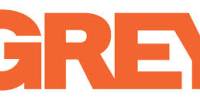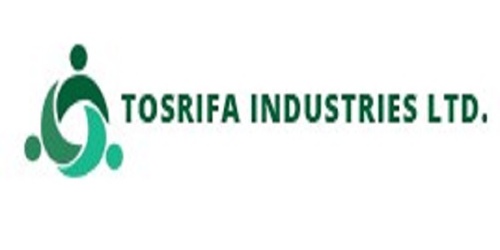Modern banks play an important part in promoting economic development of a country. Banks provide necessary funds for executing various programs underway in the process of economic development. They collect savings of large masses of people scattered through out the country, which in the absence of banks would have remained idle and unproductive. These scattered amounts are collected, pooled together and made available to commerce and industry for meeting the requirements. Economy of Bangladesh is in the group of world’s most undeveloped economies. One of the reasons may be its undeveloped banking system.
Government as well as different international organizations have also identified that undeveloped banking system causes some obstacles to the process of economic development. So they have highly recommended for reforming financial sector. Since 1990, Bangladesh government has taken a lot of financial sector reform measures for making financial sector as well as banking sector more sound and transparent, and formulation and implementations of these reform activities have also been participated by different international organization like World Bank, IMF, ADB etc.
Bank marketing is one of the booming parts in world economy. Without Bank marketing it is awfully sturdy for every bank to survive. In the modern World, bank marketing is a new criterion to us.
OBJECTIVES OF THE STUDY:
Broad Objective
The study will explore the applicability of marketing mix strategies for IFIC Bank Ltd.
Specific Objectives:
What are the product related strategies of IFIC Bank Limited?
What are the price related strategies of IFIC Bank Limited?
What are the criteria used by IFIC Bank for setting up a particular branch?
What promotional strategies are used by the banks to attract consumers?
What Process the bank uses to deliver its service to the customer?
SERVICES MARKETING DEFINED
“A service is any act or performance that one party can offer to another that is essentially intangible and does not result in the ownership of anything. Its production may or may not be tied to a physical product” (Kotler, 2004)
“A service business is one in which the perceived value of the offering to the buyer is determined more by the service rendered than the product offered” (Goncalves, 1995)
1. Lack of ownership:
You cannot own and store a service like you can a product. Services are used or hired for a period of time. For example: when buying a ticket to the USA the service lasts maybe 9 hours each way, but consumers want and expect excellent service for that time.
2. Intangibility:
Intangibility indicates that the offering cannot be seen, tasted, felt, heard or smelled before being bought. For example: how could you sample a haircut or a flight to Mauritius? “Services are something which can be bought or sold, but which you cannot drop on your foot” (Gummesson, 1987)
3. Inseparability:
Inseparability refers to the fact that the provision of the service, and the experience of it, occur simultaneously. Furthermore, the consumer and service provider are both involved in the process of delivery. For example: A vehicle (product) is manufactured, sold and driven. BUT: An airline seat is dependent on the co-operation of the airport ground staff, cabin crew, pilot, etc. to make the journey a satisfying experience.
4. Perishibility:
Perishibility describes offerings that cannot be saved, stored, resold, or returned. It is not possible to delay the consumption of services. For example: It is not possible to store (keep on the shelf) tax consulting services.
5. Heterogeneity:
It is very difficult to make each service experience identical. A level of inconsistency is inherent in service provision. For Example: It is unlikely that the workmanship of your car repair will be identical each visit to the garage – you are likely to have good and bad experiences. On the other hand, a chocolate bar (e.g. Nestlé Aero) will almost always taste the same – irrespective of when or where it is bought.
THE SERVICES MARKETING MIX
McCarthy, as cited by Bennet (1997) was the first who offered the marketing mix which is also known as the four P’s. The marketing mix consists out of Product, Price, Place and Promotion. Grönroos (1994) questions the 4 P’s model and says that it has become such a big phenomenon that today’s paradigm is set to the Four P’s and other assumptions are neglected and rejected.
Booms and Bitner, as told by Bennet (1997) introduced 3 more P’s to the marketing mix in 1981 which consist out of People, Process and Physical Evidence. The marketing mix with the 7 P’s is highly appropriate towards businesses who offer services (Zeithaml and Bitner 2003).
Product
Kotler and Armstrong (2008) put it clear on what the aspects are under the P of Product of the Marketing Mix. They say it is an offering that brings value to target customers and may come in the form of a pure tangible good (product) or a pure service. Instead of simply making products and delivering services, companies are creating and managing experiences for their customers with their product or company.
Price
Price is the only P in the marketing mix which is a variable which not costs money but generates it; it is the amount of money that is charged for either a product or service or the total of values that consumers will exchange for the benefits for making use of or having the product or service. Prices should fall within the borders of too high prices which will not produce enough demand and between too low prices which will not produce enough profit (Kotler & Armstrong 2008).
Place
Place in the marketing mix defines where the product is sold, through which channel and with what transportation, logistics etcetera (Kotler & Armstrong 2008). Although services are not tangible, their delivery may need tangible assets (for example: a client of a bank needs a place to talk to the service employee).
Woodruffe (1995) underlines that the distribution (or place) in the marketing mix of services marketing has the main purpose of making services accessible and available. Where accessibility has been defined as the ease and convenience with which services can be bought, used or received and where availability is defined as the extent, to which services are obtainable or capable of being purchased, used or received. Customer needs and wants define how the customer wants its service and through which channels.
Promotion
Promotion in the marketing mix basically exists out of communications (Woordruffe 1995), Target groups need to receive information about the products and services before they can even start to consider making a purchase. The promotion mix consists of
ADVERTISING,
SALES PROMOTION,
PUBLIC RELATIONS,
PERSONAL SELLING
Combining Caroll’s (1979) framework with Quazi and O’Brien’s (2000) model for corporate social responsibility provides a useful mechanism for investigating CSR in Bangladesh. Caroll (1979) suggested that all firms strive to balance their economic, legal, ethical and discretionary responsibilities in order to meet their social obligations.
Economic responsibilities lay the foundation of all social obligations and are deeply rooted in the classical doctrine of “business of business is business” as endorsed by noble laureate Milton Friedman (1970).
Legal responsibilities are mandatory for corporations as these are prescribed by law. Therefore, corporations have no choice but to comply with these basic “ground rules” (Carrol, 1979, p. 50).
Ethical responsibilities of corporations are additional responsibilities going beyond legal compliance and profit making and include those that firms believe are the right things to do. Ethical responsibility stems from humanistic, religious and moral orientation of corporations (Lantos, 2001).
The discretionary responsibilities refer to the voluntary nature of obligations rooted in the altruistic principles that are neither required by law nor are expected by the community.
People
Woodruffe (1995) recognizes in people not only the service employees, but as well the customers and their roles in delivering the service to derive service benefits. The role of the employee is to deliver the service, and companies should – through Human Resource Management – find and develop the right people to give the service to its customers.
Where Woodruffe (1995) solely uses personel in the ‘People’ part of the services marketing mix, Zeithaml and Bitner (2003) also define the customers themselves as an important part of the final quality of the service.
For example with taking a haircut, the more precise the customers explains how he or she wants him or her hair to look like, the better the hairdresser can perform its job. They define that there are three levels of customer participation (low, moderate and high) and that there are three major roles played by customers in service delivery.
Process
Process defines the way things are actually done and the steps taken in service delivery to achieve the desired results (Woodruffe 1995). As well the author mentions that there are certain aspects which companies should keep in mind when designing a service, these are: customer participation, location or service delivery, the service itself, high –or low contact services, degree of standardization and complexity of the service.
Shostack, as cited by Zeithaml and Bitner (2003) points out that, since services are intangible and therefore described in words by people, companies have to be really clear in defining the service process. The risks of relying on words alone in describing services are the oversimplification of the service, incompleteness of the description, subjectivity of different readers and the biased interpretation of the words used to describe the service
Physical evidence
To evaluate services before its purchase and to assess their satisfaction with the service and after it is bought; customers tend to rely on tangible cues, or physical evidence (Zeithaml and Bitner 2003). This can consist out of the servicescape with its facility exterior, facility interior and air quality and temperature. And other tangibles like business cards, employee dress, uniforms, WebPages etcetera.
Finally, Lovelock and Wirtz (2007) say that physical evidence plays a vital role in creating a particular corporate identity and shaping the nature of the experience of the customers, together with the tasks performed by customer-contact personal.
Before studying about IFIC bank and their Marketing mix Strategies, it should be known that they are providing services. There are some criteria to know about services.
Financial Service firms are expected to demonstrate leadership and expertise in their ability to manage risk, control expenses, reduce liability and yield higher returns on assets. The same expectations hold true for the management of their own, most valuable asset – their people.
Along with widespread consolidation in the financial service arena comes the need for streamlined technology, flexible labor management systems, and flawless accuracy in managing compliance and reporting.
And regardless of the location, by phone or in person, financial service firms must foster a culture that supports standardized customer service that is timely, consistent and responsive to peak periods, seasonal demands and market fluctuations.
As with any customer-focused business, employee satisfaction is essential in providing a positive customer experience. Employee management solutions that provide self-service and flexible scheduling helps address work-life challenges, preserve morale and improve retention.
Workforce Insight’s consultants understand the unique challenges faced by financial service firms. Their entire service offering is focused on helping businesses improve the way they manage “people assets”.
INTRODUCTION
All over the world the dimension of banking has been changing rapidly due to deregulation, technological revolution, and globalization. Banking in Bangladesh has to keep pace with the global change. Now the banks must compete in the market place both with local institutions as well as foreign ones. To survive & thrive in such a competitive banking world, two important requirements are: development of financial infrastructure by the central bank & development of professionalism in the sense of developing an appropriate man power structure and its expertise and experience.
WHAT IS BANKING?
The Jews in Jerusalem introduced a kind of banking in the form of money lending before the birth of Christ. The word ‘bank’ was probably derived from the word ‘bench’ as during ancient time Jews used to do money -lending business sitting on long benches.
First modern banking was introduced in 1668 in Stockholm as ‘Savings Pis Bank’ which opened up a new era of banking activities throughout the European Mainland. In the South Asia region, early banking system was introduced by the Afgan traders popularly known as kabuliwallas.
The word “Banking” has been defined to mean the accepting, for the purpose of lending or investing, of deposit of money from the public, repayable on demand or otherwise and withdrawal by cheque, draft, and order or otherwise.
BANKING SECTOR IN BANGLADESH
Banks play an important role in the economy of the country. After liberation except the foreign banks all the banks were nationalized. These banks were merged and grouped into six commercial banks. Of the total six commercial banks Uttara and Pubali were transferred to private sector from 1985. Now there are four nationalized commercial banks namely Agrani, Janata, Rupali and Sonali Bank. These are four specialized bank in our country. In addition to there are 49 private commercial banks in our country at present. Sonali Bank is the largest among the NCBs while Pubali is leading in the private ones. Among the foreign banks, Standard Chartered has become the largest in the country.
Banking sector has a vital role to play in the economic activities and development of any country. This sector is much more important in a developing country like Bangladesh. The whole scenario of the economy of a country can be ascertained by examining the condition of the banking sector. In Bangladesh, the banking sector dominates the financial sector and macroeconomic management largely depends on the performance of the banking sector. Banking sector grew primarily in the public sector with main emphasis on restructuring of the financial system and development needs of the war-torn economy with gradual liberalization in subsequent years. It was increasingly felt that banks should be allowed in the private sector for giving a fillip to development process on the basis of private initiative. In the 80’s for the first time a number of banks in the private sector were allowed. Subsequently in the mid 90’s some more banks in private sector also commenced operations. Finally, in 1999, 3rd generation of private sector banks was given permission to operate. As a result while up to 80’s public sector banks dominated financial sector, banks in the private sector were given increased responsibility with the passage of time.
Private commercial banks are divided into three groups according to their commencement of business. They are familiar in the name of 1st generation, 2nd generation and 3rd generation banks.
1st Generation Banks (Established 1982-1988):
National Bank Limited, the City Bank Limited, United Commercial Bank Limited, AB Bank Limited, IFIC Bank Limited, Islami Bank Bangladesh Limited and Al-Baraka Bank Bangladesh Limited
2nd Generation Banks (Established 1992-1996):
Eastern Bank Limited, Prime Bank Limited, National Credit & Commerce Bank Limited, Southeast Bank Limited, Dhaka Bank Limited, Al Arafa Islami Bank Limited, Social Investment Bank Limited and Dutch-Bangla Bank Limited.
COMPANY PROFILE OF IFIC
An over view of the organization:
International Finance Investment and Commerce Bank Limited (IFIC Bank) is banking company incorporated in the People’s Republic of Bangladesh with limited liability. It was set up at the instance of the Government in 1976 as a joint venture between the Government of Bangladesh and sponsors in the private sector with the objective of working as a finance c company within the country and setting up joint venture banks/financial institutions aboard. In 1983 when the Government allowed banks in the private sector, IFIC was converted into a full fledged commercial bank. The Government of the People’s Republic of Bangladesh now holds 32.75% of the share capital of the Bank. The Government of the People’s Republic of Bangladesh now holds 32.75% of the share capital of the Bank. Directors and Sponsors having vast experience in the field of trade and commerce own 11.42% of the share capital and the rest is held by the general public.
During 28th January 1965 The Eastern Banking Corporation inaugurated its operation in East Pakistan as a commercial bank. After 6 months of its inauguration it has got the status of Schedule Bank. It was the first Bengali Owned commercial Bank. After liberation the Eastern Banking Corporation was changed by name as IFIC Bank Ltd. During 1972 it was taken under national ownership. At that time it’s paid up capital was 69.13 crore and profit figure was 42 lakhs. During September 1983 it was privatized under Privatization Act. At that time this deposit was 231.03 crore and profit figure was 5.06 crore. Up to 2002 its number of branch stands to 198 and it’s paid up capital was 100 million. 95% of its shareholder is public and rest of share holds by Government. The bank earned ever-highest operating profit during the year 2002 among all private banks of Bangladesh (except Islami Bank BD Ltd.) The bank earned an operating profit of Tk. 131.18 crore during the year 2002.
General banking Division:
A wide range of products and services different type of deposits such as SB, CD, FDR etc are offered by this department. Local private banks is biggest threat a they offer higher interest rate and better services.
General Credit Division:
A wide range of products and services, such as different type of loans are offered by this department. It faces continuous challenge from the local private banks, which mainly specializes in the consumer banking. As a result, it has to develop new products and services to ease the competition on a continuous basis. The approval is mainly based on the risk analysis of the corporate clients done by the Corporate Banking division.
Finance and Accounts Division:
This department performs the following activities:
• Sources of finance
• Administration, audit and back office operation.
• Salary & Provident Fund
• Taking care of taxation and financial control of the Bank.
• Decision making related to administrative activities
Recovery Division:
Recovery of stuck-up loans is a major concern for the bank. This division helps general credit and project finance divisions to recover the loans and take legal action against those creditors. Some time there is some usual recovery. Recovery from written off loans goes to income account of the bank.
Project Finance Division:
IFIC Bank’s corporate clients mainly comprise the top local and multinational companies operating in Bangladesh. The main objective of this department is to build and maintain positive relationships with their clients. As a result, each and every company is assigned a Relationship Manager, who maintains regular contacts with clients. Moreover, this department offers the following facilities to its clients:
• Project Finance.
• Syndicated Loans.
• Bonds and Guarantees, etc.
Treasury Division:
The foreign exchange and money market operation of the IFIC Bank is broad. Exotic currencies happen to be one of its specials areas of strength. A 24 hour-service is provided to customers in Bangladesh through the Bank’s network of dealing centers placed in the principal of the world. The Bank’s treasury specializes in offering solutions to who wish to manage interest rate and currency exposures that result from trade, investment and financing activities of other dynamic economies of the region.
Internal Control & Compliance:
Banking involves high risk, the presence of effective internal control system, corporate governance, transparency and accountability is vital to ensure smooth operation of the bank. The internal control is the process affected to provide reasonable assurance for the achievement of the objectives of the bank, the reliability of financial reporting and compliance with applicable laws, regulation and internal policies and branches, detect major deficiencies in the branches, review the activities and organizational structure of the internal audit function.
Personal Division:
It works with the administrative issues and supervise internal work environment. It also encourages its staff to conform to an internal culture of ethical behavior and sensitivities to the culture and religion of the country.
Account opening section
Introduction:
Desk-1 is engaged in account opening and closing tasks. In IFIC Bank, Stock Exchange Branch
One staff officer is engaged in this task. Computer is used to operate the account information. Everything is maintained by the help of computer. BEXI BANK, software is used to do this job. Following is the job description of desk-1 and some important discussion regarding this desk.
Job Description:
1. Opening different types of accounts.
2. Handling operation of different types of accounts.
3. Responsible for issuing of cheque books.
4. Transferring & closing different types of accounts.
5. Opening & operating PSS accounts.
6. Opening & operating MIS accounts.
7. Giving account statements to the clients.
8. Giving Tele banking services.
9. Making different vouchers regarding above transactions.
10. Giving support to the valued clients of the bank.
Types of Deposit Accounts:
IFIC Bank accepts deposits from following accounts
1) Current Deposit
2) Saving Bank Deposit
3) Special Notice Deposit (SND)
4) Fixed Deposit
5) Bearer Certificate of Deposit(BCD)
6) Any other Deposit, as may be instructed by Head Office.
Kinds of Account Holders:
FIC Bank open accounts of the following categories of depositors:
01. Individual
Individuals are adult persons of 18 years age or more who are competent to enter into contracts. For example, a person of below 18 years age is not an adult person. Adult persons include married or unmarried woman, pardanashin woman, and illiterate persons. However, lunatics, persons of unsound mind and bankrupts are not adult persons.
02. Joint Accounts:
More than one adults jointly or adult with minor may constitute joint accounts.
03. Sole Proprietorship Concerns:
A Business or trading concern owned by single adult person is sole proprietorship concern.
04. Partnership Firms:
A Business concern owned and managed by more than one person who may be registered or not registered is a partnership firm. Persons who have entered into partnership with one another are called individually “Partners” and collectively “firm ‘and the name under which their business is carried on is called the firm’s name.
05. Private Limited Company:
A body corporate formed and registered under Company Act, 1994 with limited members and liability having certificate of Incorporation given by Register, Joint Stock Companies and Memorandum of Association and Articles of Association.
06. Public Limited Company:
Corporations A body corporate formed & registered under Company Act, 1994 with limited liability of the shareholders and with no upper ceiling of commencement given by Register, Joint Stock Companies. It must have Memorandum of Association., autonomous bodies are organizations created by special acts of the parliament or by the presidential Order.
07. Trusts:
Trusts are created by trust deed in accordance with the law. Trusts are given control of an estate, usually of the deceased for the benefit of certain persons who are called beneficiary.
08. Liquidators:
Liquidators are appointed by court of law for companies going into liquidation.
09. Executors/Administrators:
Executors are appointed by a deceased himself before his death by WILL to settle the accounts of the person after his death .Administrators are appointed by court of law in the absence of deceased’s WILL.
10. Club/Association/Society:-
These are organizations created & registered or not registered under societies Registration Act or Company Act or the Co- operative societies Act.
11. Co- operatives:
These are registered under societies Registration Act or Companies Act or the Co- operative societies Act.
12. Non- Government organization:
Non- Government Organization (NGOs) is registered under societies Registration Act or Co-operative Societies Act.
13. Non- Trading Concerns:
This is organization registered under societies Registration Act or Companies Act or Co- operative Societies Act.
Other products and services
IFIC Bank has taken a project ‘Horizon’ for implementation of On-Line Banking. They have selected five branches namely Gulshan, Motijheel, Narayangonj, Agrabadand Sylhet as pilot branches. It is expected that these branches shall come under the purview of On-line banking by the middle of 2007. It is expected that other branches will come under the purview of On-line banking between 2007 and 2008. In the meantime, pending On-line banking process, Bank has implemented Any Branch Banking (ABB) scheme amongst 17 branches. In order to penetrate more into the market and increase IFIC Bank’s market share, bank has executed an agreement for principal visa membership. Upon implementation of the agreement, bank shall issue IFIC Visa Card in the market. Its success would depend largely on effective marketing strategy by the branch managers. This will also help increasing branch income.
Leading Issues of IFIC Bank Ltd:
• Shifting of Managerial attention from Traditional mode of Financing to:
• Consumer Financing,
• Small Enterprise Financing,
• Trade Financing, and
Other Short Term financing :
Re-profiling of existing Credit Portfolio.
Mobilizing low cost fund/ change of Deposit mix.
Recovery of Non Performing Loan.
Ensuring Asset Quality.
Efficient Fund Management
Clearing and Remittance Department
The main objective of and clearing and remittance department is to provide an extra facility to the customer other than cash receipt and payment. We can divide this department into two parts. One is Clearing & Transfer Delivery section, and the other one is Local Remittance section. In IFIC Bank, Stock Exchange Branch, there are t employees, working in this department. Findings are provided in the following parts regarding these two sections.
Local Remittance
Sending money from one place to another place for the customer is another important service of banks. And this service is an important part of country’s payment system. For this service, people, especially businessmen can transfer funds from one place to another place very quickly. There are five kinds of techniques for remitting money from one place to another place. These are:
1) Demand Draft
2) Pay Order
3) Telegraphic Transfer
4) Telephone Transfer
Establishment Section
This section deals with employee’s salary, many types of expenses such as purchase of pen, paper, equipment, machinery and payment of labor cost and employee conveyance. In case of leave of absence employee collects prescribed form this section. This section of the bank is under the second man of this branch. All paper of this section is first signed by the second man of the branch and then branch manager is informed
6.12 Accounts section
This is obviously an independent and unique department, which works as the composition of all the departments of the branch, but it is under the In-Charge of the General Banking in this branch. This section in this branch is fully computerized. So the conventional large ledger and journal books are not kept like the nationalized banks. Only two personnel maintain the entire accounts section. It receives the vouchers from all departments and prepares the subsidiaries and maintains accounts. End of the day all data are stored in CD and at the month end they are send to Head Office.
Customer Handling
a) Receives customer’s phone:
Different type’s phone calls were received from customers in different time about IFIC Bank Limited services.
b) Account opening and closing:
The customers who came to booth to open an account, necessary support service were provided them to fill up the opening form, account number and help them to do other formalities. Also help them to close the account.
c) Clearing:
Sometimes a few of customers don’t understand how does he fill up the cheque book, this situation I try to help them as soon as possible.
Findings
From analysis some problems are found in IFIC bank’s marketing mix. These are mentioned below:
There are only five ATM booths. As a result customers having IFIC’s ATM card face some problems regarding withdrawal of money by using ATM card.
IFIC bank performs little promotional activities in comparison with other commercial bank.
The number of human resources is needed in front desk and in clearing section is really insufficient to give services to huge number of customers.
There is no fast track.
No parking space for employees.
Processing hour is lengthy.
There are some problems in interior designing.
RECOMMENDATIONS
Private banking organizations are now doing an outstanding business, which signifies that people are satisfied with the services of the banks. IFIC Bank Limited has made a remarkable track in the people’s mind within few years of its operation. It implies a positive attitude of the investors to the bank now it’s very much necessary to look into its weaknesses to advance in this competitive arena.
Promotion strategy
The promotion strategy of IFIC is not at all effective. The bank should bear in mind that advertising is the most effective technique to communicate with people. IFIC could spread its reputation more widely by using different types of media in the most attractive way. Some people still does not know the bank, which is a disappointing issue for the bank.
Recruit the efficient employees
IFIC should redesign its recruitment policies to have productive and efficient Work force. Sometime the employers of IFIC give priority to the personal relationship with the incumbents which need to be changed.
Training Systems
IFIC needs to install effective in-house training designed to serve the organization’s need. Even though the employees of the bank are required to have training from Bangladesh Institute of Bank Management (BIBM) but the trainings conducted by they may not suit to the requirement of the organization.
Reduce the interest rates
IFIC should be concerned about the interest rates on different schemes. It needs to restructure the rates to have competitive advantage over the peers. IFIC could increase its deposits and investments by reducing interest rates.
Contact with the clients
IFIC could increase better relationship with their respective clients by communicating with them regularly. It would create a scope for the bank to monitor the clients as well as to hold them.
Research and developments
It is an essential measurement of the organization to achieve the goal and objectives. IFIC is no more concern about the market research. But they should consider it seriously to understand the market opportunities and competitions. They could meet the demands of the customers and develop their performance only by doing perfect market research and evaluation currently a cell engaged in market research has been developed at the Head Office. But it is not working properly because the officers working in the cell are burdened with responsibilities in the credit division and cannot give time for market research.
Instrumentality of Branch Managers
At a micro level, it is the responsibility of the branch managers to promote and drive the message to the people in the local area. They should organize small programs in order to attract people and create awareness in the local area about the new schemes of the bank.
More Involvement in CSR activities:
At present IFIC performs CSR activities at ethical level. They should involve in CSR activities more proactively & become an ideal corporate citizen.
CONCLUSION
Banking sector of Bangladesh has undergone dramatic changes since the independence in 1971.Immediately after liberation the government nationalized all banks. In the early 80s a number of legislative steps were also taken to reform the banking sector. Private Commercial Banks (PCBs) were allowed to enter into the market, two Nationalized Commercial Banks (NCBs) were denationalized and another NCB as converted into a limited liability company and partially privatized. In 1990 the government at the advice and support of the World Bank initiated five-year Financial Sector Reform Program (FSRP) with the objectives to introduce capital adequacy requirements, improve loan classification system, set more liberal interest rate policy, improve loan recovery and reform the NCBs through recapitulating and improving their operating system. Although the tenure of the FSRP expired in 1996 a number of further steps were initiated by Bangladesh Bank to bring discipline in the banking sector. Currently, the World Bank and International Monetary Fund are jointly concluding the Financial Sector -” Assessment Program (FSAP) with a view to undertake further reforms in the sector. In 2002, the government formed a Banking Sector Reform commission to formulate guidelines for further reform of banking sector including revision of the Bank Companies Act 1991.
Under the above backdrop IFIC is a private sector bank having a large market share of the industry. If the weaknesses are addressed appropriately and Opportunities are explored keeping in view the threats behind with a stable and professional management having regard to appropriate corporate governance and modern automation technology then IFIC could expect to achieve its desired target of a visionary bank.
















